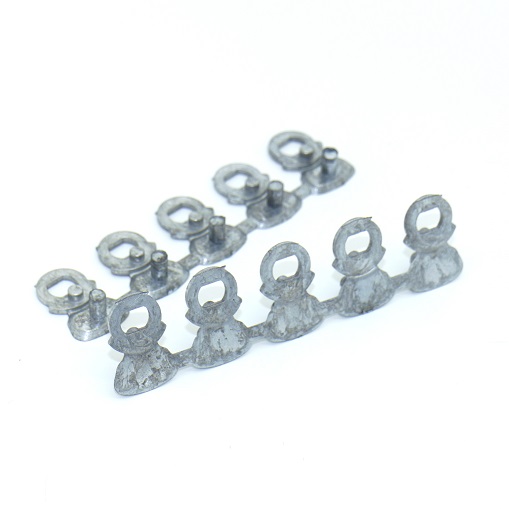Zinc alloy is an alloy composed of other elements based on zinc. The commonly added metals include aluminum, copper, magnesium, cadmium, lead, titanium, etc. Zinc alloy has the advantages of low melting point, good fluidity, easy fusion welding, and plastic processing, good corrosion resistance in the atmosphere, easy recovery and remelting of residual wastes, but low creep strength, easy to cause dimensional changes due to natural aging. It is an ideal material for the zinc die casting process.

Common Types of Zinc Alloy Used in Die Casting
The cast zinc alloy has good fluidity and corrosion resistance and is suitable for die casting equipment, automobile parts shells, etc. The die casting zinc alloys include Zinc Alloy 3, 5, 7, and ZA-8. Zinc alloy 3 is the most widely used. In the 1970s, high aluminum zinc base alloys ZA-8, ZA-12, and ZA-27 were developed.
– Zamak 3: good fluidity and mechanical properties. It is used for castings with low mechanical strength requirements, such as toys, lamps, decorations and some electrical parts.
– Zamak 5: good fluidity and good mechanical properties. It is applied to castings with certain requirements for mechanical strength, such as auto parts, electromechanical parts, mechanical parts, and electrical components.
– Zamak 2: it is used for mechanical parts with special requirements for mechanical properties, high requirements for hardness, good wear resistance, and general requirements for dimensional accuracy.
Metals and Elements in Zinc Alloy and Their Uses
In the alloy composition, the effective alloy elements are aluminum, copper, and magnesium; Harmful impurity elements are lead, cadmium, tin, and iron.
1. Aluminum
The aluminum content shall be controlled by 3.8 ~ 4.3%. Considering the required strength and fluidity, good fluidity is a necessary condition to obtain a complete, accurate size and smooth surface casting.
– Improve the casting performance of the alloy, increase the fluidity of the alloy, refine the grain, cause solid solution strengthening, and improve the mechanical properties.
– Reduce the reaction ability of zinc to iron, and reduce the erosion of iron materials, such as gooseneck, mold, and crucible.
2. Copper
Advantage:
– Increase the hardness and strength of the alloy;
– Improve the wear resistance of the alloy;
– Reduce intergranular corrosion.
Disadvantages:
– When the copper content exceeds 1.25%, the size and mechanical strength of die castings will change due to aging;
– Reduce the extensibility of the alloy.
3. Magnesium
Advantage:
– Reduce intergranular corrosion
– Refine the alloy structure to increase the strength of the alloy
– Improving the wear resistance of the alloy
Disadvantages:
– When the magnesium content is > 0.08%, the hot brittleness, toughness, and fluidity decrease.
– It is easy to be oxidized and lost in the molten state of the alloy.
4. Impurity elements: lead, cadmium, and tin
It makes the intergranular corrosion of zinc alloy very sensitive, accelerates its intergranular corrosion in the warm and wet environment, reduces the mechanical properties, and causes dimensional changes in castings. When the content of lead and cadmium in the zinc alloy is too high, and the workpiece is just cast, the surface quality is normal, but after it is stored at room temperature for a period of time (eight weeks to several months), bubbles appear on the surface.
5. Impurity element: Iron
– Iron reacts with aluminum to form an Al5Fe2 intermetallic compound, causing the loss of aluminum and forming scum.
– Hard spots are formed in die castings, affecting post machining and polishing.
– Increase the brittleness of the alloy.
The solubility of iron in molten zinc increases with the increase in temperature. Each temperature change of molten zinc in the furnace will lead to iron supersaturation (when the temperature drops) or unsaturation (when the temperature rises). When the iron element is supersaturated, the supersaturated iron will react with aluminum in the alloy, resulting in an increase in the amount of scum. When the iron element is unsaturated, the corrosion of the alloy to the zinc pot and gooseneck material will be enhanced to return to the saturated state. A common result of the two temperature changes is the final consumption of aluminum and the formation of more scum.

